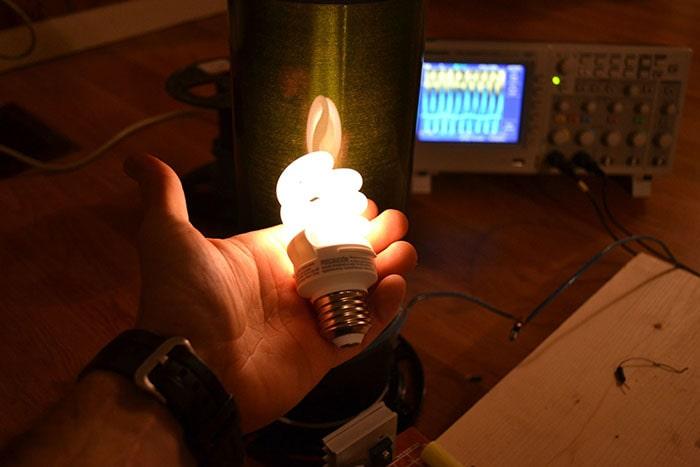Tesla’s Dream Come True: Enter The Age Of Wireless Electricity – Will Our Streets And Homes Eventually Become Unplugged?
Imagine For A Second You Were Transposed Into The Karmic Driven World Of Earl. It All Depends On The Realization Of Tesla’s Dream.
In the Age Of Wireless Electricity, given the various technologies in the digital world that are changing human lives, such as wireless charging, electric cars, 5G, etc., it seems that Wireless Electricity, which is the old dream of scientists, is being realized.
Today, companies such as Wave in the United States, Space Power Technologies in Japan, and energy startup Emrod in New Zealand are working on efficient, cost-effective, and durable power transmission solutions in a new way called Wireless Power Transmission.
Several pilot projects are being tested for automatic wireless charging of vehicles when traveling on the road or when parked. In most cases, the results have been promising.
Take a look at the history of wireless power transmission
It is better to first look at the history of this technology and what and why it is to understand why this technology is so important and will impact our future.
In the nineteenth century, many theories emerged about how electricity was transmitted. One of them was wireless power transmission. In 1891, the American-Serbian scientist Nikola Tesla designed a unique system called the Tesla coil.
He succeeded in making a unique device that worked on the principle of electric amplification and transmitted electricity without wires. Of course, his attempt to achieve his goal did not succeed, and he could not turn his design into a practical and commercial product because he could only transmit electricity at short distances.
His method, however, is still used for short-range wireless systems.
In another attempt, he developed a wireless transmission system on Long Island called the Tesla or Wardenclyffe Tower, which he believed could be used to transmit power over long distances wirelessly. Still, Unfortunately, his test investor, Jeep Morgan, refused to spend more, so he halted the project, and the 1906 building was demolished. As a result, Tesla could not provide a practical way to transmit wireless power.
Nikola Tesla died in 1943, and his dream of wireless power transmission did not come true. Still, much research has been done over the past hundred years to prove the great scientist’s claim that using land instead of wire as a medium for wireless power transmission is an idea.
That was right. Tesla’s dream has not been forgotten, and today many professionals and companies are researching and developing various wireless transmission methods.
Wireless electricity using solar satellites
With the advancement of technology, building a wireless energy network based on solar energy and microwave signals is no longer a distant dream. Earth-orbiting solar satellites, which could become a reliable energy supply infrastructure shortly, are systems that collect sunlight and convert it into a type of energy that consists of microwaves.
These microwaves are transmitted to an on-ground antenna or directly to the power grid. They are converted to DC power to supply electricity to homes or a power storage source.
These model projects require huge budgets and capital. In this regard, Donald Byrne, owner of Irvine Real Estate Investment Company and a member of the board of Caltech, invested more than $ 100 million in the Space Solar Energy Project (SSPP).
Microwave-based power transmission
Microwave Power Transmission (MPT) The term Microwave Power Transmission means wireless power transmission at microwave frequencies from one point to another. In this method, when the microwaves are irradiated, a DC receiver and rectifier (a device that converts alternating current to direct current) convert the waves into usable electric current.
The highest efficiency of electricity generation using microwaves is recorded at 84%. This record was set in 1975 by a Japanese research group. However, the range of these experiments was short and obtained no successful results for high-efficiency energy transfer over long distances.
The next goal is to build a system for wireless power transmission over long distances. In a study published at the University of Tsukuba in August 2021, Japan unveiled a high-energy microwave radiation system that could be used as an efficient and reliable wireless power source for launching rockets into space.
90% of the weight of rockets launched into space is the weight of their fuel tank, which can be utilized using wireless power transmission technology. Microwave energy removed the missile fuel tank, a significant change in their construction.
Laser power transmission
Solid-state laser diodes, like fiber-optic communication diodes, are among the best DC-to-laser converters. The photovoltaic receiver receives the laser beams and converts them into electricity using laser power transmission.
Laser beams for wireless power transmission over long distances are easily manageable and controllable, the most significant advantage of laser power transmission.
Is Tesla’s dream of wireless power supply coming true in New Zealand?
Elmwood Energy startup is working on a prototype of the infrastructure used for the wireless power transmission system in New Zealand. In the above scenario, Emroud has designed a remote energy transfer technology. A wireless network of antennas and electrical rectifiers (antenna rectifiers) transfers energy in electromagnetic waves from one point to another. In this method, electricity is transmitted using antennas in the form of non-ionic rays with a frequency equal to radio waves.
According to the startup, to ensure the high safety of low-energy lasers, researchers have assumed that the laser beams will be extinguished and extinguished before hitting flying objects or birds, so New Zealand officials have assured that the laser beams will not be exposed to anything except air.
Or another bird will not call. This technology is a suitable method for wireless power transmission in New Zealand due to its unique geographical location and can maintain its stability in different climatic conditions.
This technology is based on rectifying and converting alternating current to direct current. Due to geographical conditions, it helps supply electricity to areas where it is impossible to establish a power supply network.
While the New Zealand government is wireless from the power transmission project, “The most important challenge for us is to reassure people that the laser beam is safe in the system used by the startup,” said Greg Kushnir, CEO of the startup.
Amer has an office in Boston, USA, and most likely, the next project of this company is wireless power transmission in the United States.
Other initiatives and measures are taken for wireless power transmission
Along with the Internet of Things, artificial intelligence, and technologies expected to be an integral part of our lives in the years to come, wireless transmission is an evolving technology that the world will soon see.
Creating effective and efficient methods for wireless power transmission instead of using the old and conventional methods of power transmission can be a significant change in clean energy production.
The American technology company WAVE, called Wireless Advanced Vehicle Electrification, has provided solutions for fast-charging electric vehicles by producing and designing tools necessary for wireless electricity transmission to low-consumption and high-consumption vehicles.
The company is working on a project to design charging systems that will be placed under the company’s passages, cars, parking lots, and roads and can produce one megawatt of electricity.
It’s A transfer without the need for wires.
It is done by placing a coil in the basement and a ring in the device. Hidden chargers under roads and parking lots can provide up to 1 MW of power and charge vehicles without power. Tesla Semi’s electric trucks are expected to be the first to use this technology.
The Beyond Earth Research Institute plans to create an efficient wireless power transmission system based on solar satellites. The company claims that this system can provide the energy needed by various industries. Its performance is so good that it can even provide the necessary power for human activities on the moon. The system introduced by Beyond Earth has two parts.
The first part of a solar satellite is a space that receives sunlight and performs the same process to convert solar energy into electricity as it does in photovoltaic solar panels, solar energy centralization systems, and subunits of wireless power transmission systems.
The second part is the receiver, which sends it to the desired characteristics of the earth or the moon after receiving the generated energy. According to the company’s officials, the completion of this system will take until 2030.
Imagine being able to charge your electric car without having to stop quickly.
The Indiana Department of Transportation, in partnership with Purdue University and the German cement company Magment, is researching a project to build a magnetic concrete road that will automatically be cordoned off as cars move on it. To be charged.
In the first phase of this research project, Pardew University will examine whether the roads are stable or not through laboratory tests. When approved by university researchers, the 400-meter-long test roads will be constructed with Magnet Company-produced magnetic cement and tested for charging 200-kilowatt trucks. If the test road is successful, the US government will use the technology on public roads.
The American company WiTricity is also working on a unique technology that allows it to be charged using magnetic detection circuits when cars are parked in a particular place.
last word
Suppose wireless power transmission technology is combined with the Internet of Things and artificial intelligence. In that case, there will undoubtedly be remarkable technologies in the future that can take humans into the world of new technologies.
For example, Smart Wireless Charging, developed by the Motorola brand, is one of these technologies. These devices can receive power in 5 to 10 watts without a problem at about 9 meters from the charger. According to Motorola, this method does not require a wireless charger pad to charge phones or similar devices.



